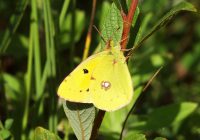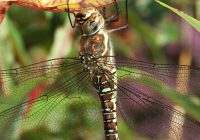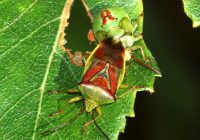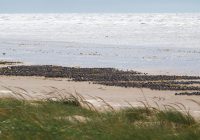Dr Phil Smith’s Wildlife Notes
August 2014
Unlike earlier months this summer, August was slightly cooler and wetter than average. However, this did little to reverse the advanced season, the appearance of the Sefton countryside being more akin to September. Fortunately, our most iconic August flower, the dazzling Grass-of-Parnassus, was unaffected. Although 46,000 plants were counted last year, the coastwide volunteer survey coincided with a blow-par year for this species. At Ravenmeols, Devil’s Hole had been deeply flooded in 2013, only about 1100 Grass-of-Parnassus being counted there. This year, under drier conditions, they bloomed in great abundance, recovering to an estimated 10,000+.
Another late summer duneland speciality is the Autumn Gentian. A colony I have been monitoring in the Birkdale frontals had 133 flowering plants compared with 147 last year. This slow decline seems to be related to the almost complete loss of Rabbits at Birkdale. In contrast, parts of Ainsdale National Nature Reserve still have abundant Rabbits and also sheep in winter. An Edge Hill University student, Alex McDonald, is investigating the distribution of Autumn Gentian on the NNR, so I joined him to search for the plant, with the help of reserve warden, Tony Meadow. We eventually found several sizeable colonies, one supporting 1500+ of this beautiful and nationally declining flower.
Much of my time was taken up with the survey of Japanese Rose survey I mentioned last month. By the end of August, most of the results were in, a total of over 500 patches being recorded and measured between Seaforth and Marshside. They cover over 6 ha – the equivalent of about 12 football pitches! The distribution of this alien invader is closely linked to its origin as a garden escape, many of the worst affected areas being close to houses and roads. However, it also seems to be spread by the sea, seeds being washed up on the strandline and germinating to form linear colonies on the frontal dunes.
A rare trip inland saw Trevor Davenport and me venturing across the border to Rixton Clay-pits Local Nature Reserve in north Cheshire. Although weather conditions were not ideal, we enjoyed ten species of dragonflies, together with no less than 13 butterflies, the highlights being Brimstone and Clouded Yellow. The latter was a big surprise, as this long-distance migrant rarely makes it so far north. We were mightily impressed by the richness of this large reserve, which is ably managed by Warrington Borough Council.
Closer to home, the Lancashire Wildlife Trust’s Freshfield Dune Heath nature reserve is unmissable at this time of year, its swathes of flowering Heather being a joy to behold. This attracts nectaring butterflies, like the Red Admiral, while late-emerging dragonflies here included the Common Darterand Migrant Hawker. A new insect for me was the Birch Shield-bug. Like other members of its family, this colourful insect shows parental care of its offspring. Recording two Graylings and a Wall butterfly, I was surprised to discover that these were new records for the reserve.
Bird migration is in full swing by August but the wader roost at Ainsdale beach on 13th was unprecedented. Packing the shore were at least 8000 Sanderling, the second highest count of this species ever for “Lancashire”. These Arctic-breeders were probably fresh in from Greenland and northern Canada, having flown the north Atlantic. Fortunately the beach was closed to cars because of the high tide and disturbance was not as bad as usual. About 1000 Dunlin and 265 Sandwich Terns added to the spectacle.
On my way to Devil’s Hole on 30th, I paused to check the trees at the end of Range Lane, Formby, where lots of birds were calling. I soon tallied about 10 Willow Warblers, two Chiffchaffs, a Blackcap and several each of Blue Tit, Great Tit, Long-tailed Tit and Chaffinch. Best of all, however, was a Spotted Flycatcher, a species I hadn’t seen on the dunes for many years. Since the 1970s, this bird has declined enormously and, tragically, seems likely to become extinct as a breeder in north Merseyside.




